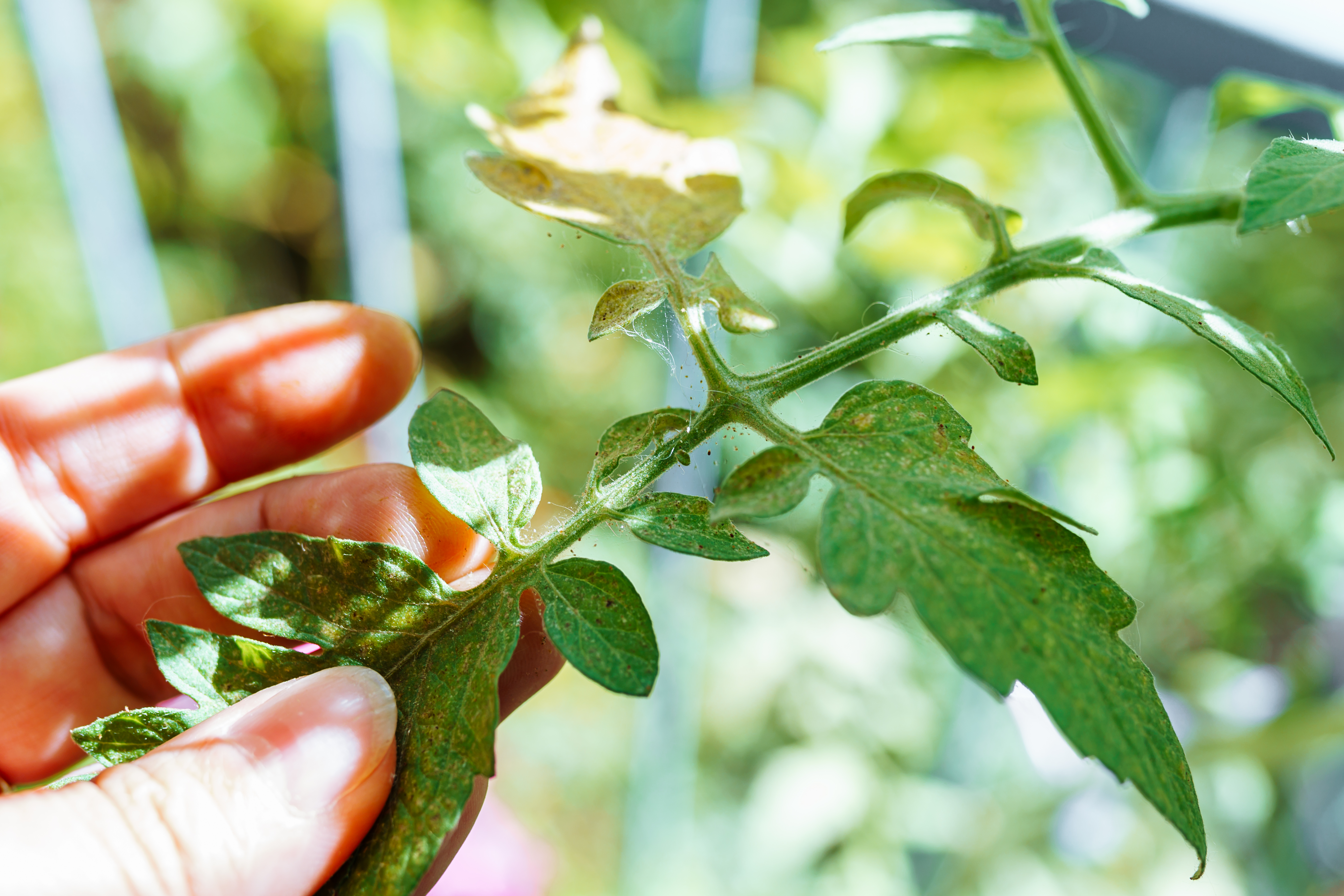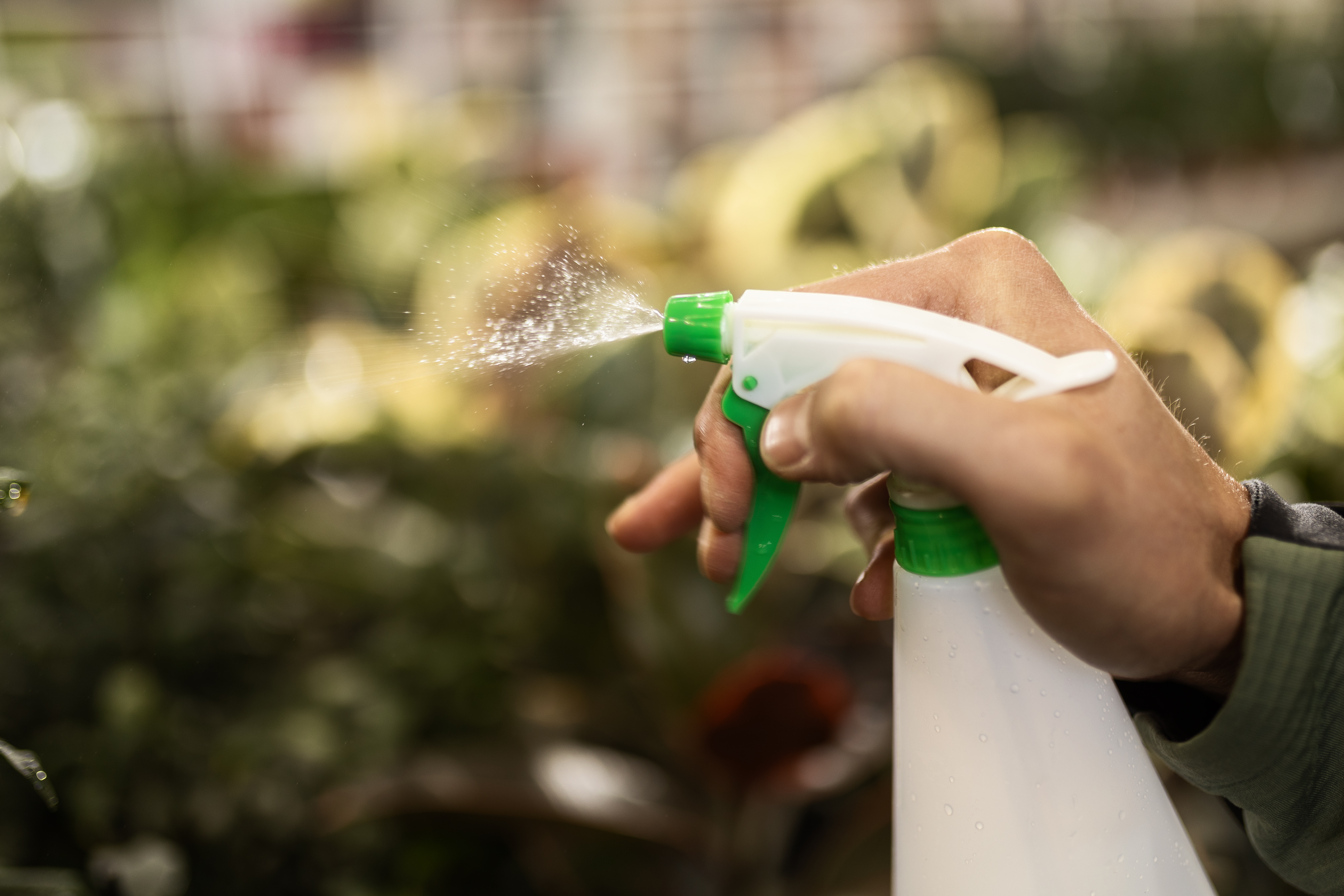
Whether you have bugs, bats, or rodents invading your home, you’ll want to contact an exterminator quickly. Find out how much pest control costs in Columbus, OH.
Spot them before your indoor plant bites the dust


The earliest sign of spider mites in plants is speckled leaves.
Other common signs include webbing, a dusty coating, wilted leaves, and slow growth.
You can deter spider mites by rinsing leaves regularly and keeping humidity high.
A professional exterminator near you can treat your home for spider mites.
Your indoor plants suddenly seem a little... off. The leaves are speckled, have a dusty sheen, and is that webbing? You might be seeing early signs of spider mites—one of the sneakiest plant pests. These microscopic menaces can turn lush greenery into crispy, sad foliage before you even know they’ve made themselves at home—in yours. Catching them early is key, which is why it helps to look for these subtle signs your plants are sharing their space.
Spider mites may be tiny, but their impact on indoor plants can be larger than life. As these bugs feed, they multiply—quickly—and can turn a thriving houseplant into a crispy, cobwebbed skeleton in the blink of an eye. If left unchecked, they don’t just stress out houseplants—they can kill them. This is why early detection can keep you from adding another plant to the graveyard left by these plant-killing insects.

The sooner you clock these subtle signs, the better chance your plants have of surviving an unwelcome spider mite infestation.
In their mission to fill their bellies, spider mites leave behind small, pale dots on the plant leaves they feast on. This is called speckling, and it’s one of the earliest signs of spider mites. These spots will appear on the upper surface of leaves, so regular inspection of your plants can help spot this initial sign.
They wouldn’t earn the “spider” in their name if these mites didn’t weave a noticeable web, though spider mite webs are much more thin and silky. Their webs are less noticeable, too, since they often appear between leaf joints, among stems, or on the undersides of leaves.
Spider mite waste can leave behind a film on plants that resembles dust, so if your peace lily is suddenly looking faded or filmy, try wiping down its leaves with a damp white cloth. If you see brown or red residue on the towel, it could be evidence of spider mites.
Where small specks are the first signs of these houseplant pests, lead curling and discoloration indicate more advanced infestation that could cause harm to your plants. Leaves that look pale, bronzed, or sunburned have been damaged by spider mites and will need some extra TLC to be brought back to life.
You’re watering on your regular schedule and giving your plant babies plenty of light, but growth has stalled. This can be another early sign that spider mites have slid their way into your plant and made it their personal habitat. The longer they go undetected, the more damage they can do and the more danger they pose to your plants.
Just like there are signs your plants are being attacked by spider mites, there are additional signs that signal it’s time for a professional to step in. If you’ve tried to treat the problem yourself and are still experiencing the following problems, hire a local exterminator:
Multiple plants are affected
Webbing is showing up almost everywhere
Plants are dying despite treatment
The infestation keeps returning

Preventing a spider mite infestation starts with keeping your plants healthy and your environment less inviting to these tiny pests. Since they thrive in hot, dry conditions, spider mites are less likely to invade your plants if you mist them on a regular basis and maintain higher levels of humidity to deter them.
A few tips to prevent an infestation include:
Inspecting new plants before bringing them indoors
Quarantine new plants for a few weeks to catch hidden infestations early
Wiping down plant leaves with a damp cloth or spray them with water
Avoiding the use of chemical insecticides, which can kill beneficial predators that naturally keep spider mite populations in check
The cost of pest control ranges from $50 to $500, depending on the severity of the infestation and the area that you’re treating. The more extensive the infestation and the larger the square footage of the space, the more likely you are to fall on the $500 range of the cost. Spider mites, however, tend to be less invasive and destructive than bed bugs or termites, so treating them may be closer to the national average, which is $170. It’s worth the cost of hiring a pest control pro to remove these pests permanently from your home.
From average costs to expert advice, get all the answers you need to get your job done.

Whether you have bugs, bats, or rodents invading your home, you’ll want to contact an exterminator quickly. Find out how much pest control costs in Columbus, OH.

How much does a gnat exterminator cost? The answer depends on the method of treatment and the level of infestation. Find out what plays into your budget.

Discover the average ant exterminator cost, factors impacting pricing, and how to save. Get expert tips to budget for ant removal and protect your home.

Fleas and ticks are irritating and can cause health issues, especially for pets. Create a homemade flea and tick killer for your yard to keep your home safe.

Roof rats can damage your home and potentially spread diseases and bacteria. Learn how to get rid of roof rats and keep them from coming back.

Your backyard should be a haven, but bugs can quickly ruin a peaceful afternoon with bites and stings. Read on to help figure out which insects are biting you in your yard and how to prevent bug bites while still enjoying time outside.